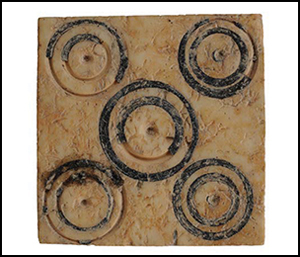Crossref Citations
This article has been cited by the following publications. This list is generated based on data provided by
Crossref.
Stacey, Rebecca J.
Dunne, Julie
Brunning, Sue
Devièse, Thibaut
Mortimer, Richard
Ladd, Stuart
Parfitt, Keith
Evershed, Richard
and
Bull, Ian
2020.
Birch bark tar in early Medieval England – Continuity of tradition or technological revival?.
Journal of Archaeological Science: Reports,
Vol. 29,
Issue. ,
p.
102118.
Rageot, Maxime
Lepère, Cédric
Henry, Auréade
Binder, Didier
Davtian, Gourguen
Filippi, Jean-Jacques
Fernandez, Xavier
Guilaine, Jean
Jallet, Frédéric
Radi, Giovanna
Thirault, Eric
Terradas, Xavier
and
Regert, Martine
2021.
Management systems of adhesive materials throughout the Neolithic in the North-West Mediterranean.
Journal of Archaeological Science,
Vol. 126,
Issue. ,
p.
105309.
Tintner, J.
Leibrecht, F.
Pfeifer, C.
Konuk, M.
Srebotnik, E.
and
Woitsch, J.
2021.
Pitch oil production – An intangible cultural heritage in Central Europe.
Journal of Analytical and Applied Pyrolysis,
Vol. 159,
Issue. ,
p.
105309.
Noeske, Michael
Leite Cavalcanti, Welchy
Brüning, Hauke
Mayer, Bernd
Stamopoulos, Antonios
Chamos, Apostolos
Krousarlis, Thomas
Malinowski, Paweł H.
Ostachowicz, Wiesław M.
Tserpes, Konstantinos
Brune, Kai
and
Ecault, Romain
2021.
Adhesive Bonding of Aircraft Composite Structures.
p.
1.
Daniaux, Thomas
2022.
Hic perfidia uici ! Tricher aux jeux de dés à l’époque romaine.
Pallas,
p.
197.
Little, Aimée
Needham, Andy
Langley, Andrew
and
Elliott, Benjamin
2023.
Material and Sensory Experiences of Mesolithic Resinous Substances.
Cambridge Archaeological Journal,
Vol. 33,
Issue. 2,
p.
217.
Lyu, Nanning
Li, Youqian
Yang, Shixia
Yue, Jianping
Tian, Feifei
Rao, Huiyun
Han, Bin
and
Yang, Yimin
2023.
Microdestructive analysis with Py-GC/MS for the identification of birch tar: a case study from the Huayang site in late Neolithic China.
The European Physical Journal Plus,
Vol. 138,
Issue. 7,
Carolan, Declan
He, Sammy
and
Taylor, Ambrose C.
2023.
Advances in Structural Adhesive Bonding.
p.
251.
Kozowyk, Paul R. B.
Baron, Liliana I.
and
Langejans, Geeske H. J.
2023.
Identifying Palaeolithic birch tar production techniques: challenges from an experimental biomolecular approach.
Scientific Reports,
Vol. 13,
Issue. 1,
Prévost, Camielsa
Drieu, Léa
Pasqualini, Antoine
and
Regert, Martine
2023.
The ARchaeological Organic residues Literature Database (AROLD): Construction of a tool for reviewing and querying published lipid data in organic residue analysis.
Archaeometry,
Vol. 65,
Issue. 5,
p.
1125.
Chasan, Rivka
Baron, Liliana Iwona
Kozowyk, Paul R.B.
and
Langejans, Geeske H.J.
2024.
Complicating the debate: Evaluating the potential of gas-chromatography-mass spectrometry for differentiating prehistoric aceramic tar production techniques.
Journal of Archaeological Science,
Vol. 164,
Issue. ,
p.
105960.
Koch, Tabea J.
Kabaciński, Jacek
Henry, Auréade
Marquebielle, Benjamin
Little, Aimée
Stacey, Rebecca
and
Regert, Martine
2024.
Chemical analyses reveal dual functionality of Early Mesolithic birch tar at Krzyż Wielkopolski (Poland).
Journal of Archaeological Science: Reports,
Vol. 57,
Issue. ,
p.
104591.
Groot, Maaike
van Haasteren, Martijn
and
Kooistra, Laura I.
2024.
Evidence of the intentional use of black henbane (Hyoscyamus niger) in the Roman Netherlands.
Antiquity,
Vol. 98,
Issue. 398,
p.
470.
Koch, Tabea J.
Adams, Sophia
Giles, Melanie
Little, Aimée
Palmas, Francesco
Rademakers, Frederik W.
Regert, Martine
Thomas, Yohann
and
Stacey, Rebecca
2025.
Potential and limitations of adhesive identification on museum curated metal objects.
Journal of Cultural Heritage,
Vol. 71,
Issue. ,
p.
358.
